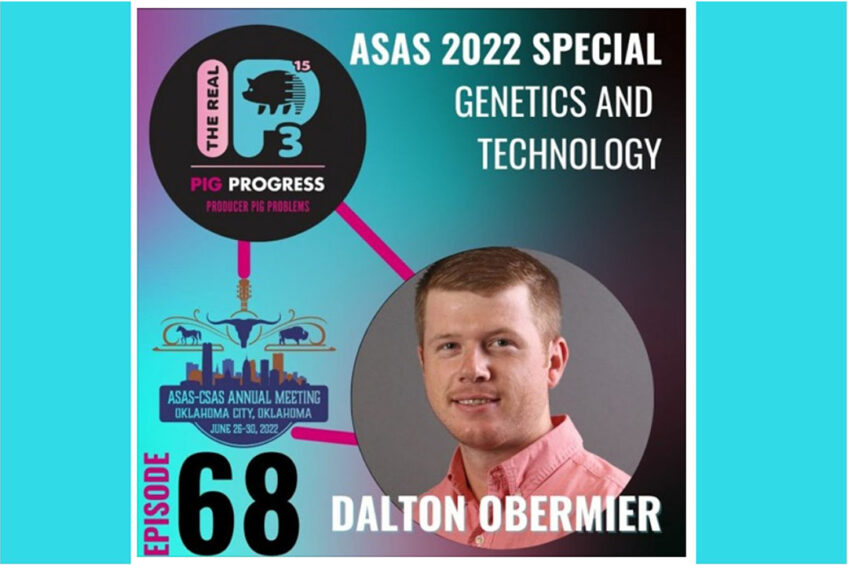Podcast: ASAS 2022 Special – Genetics and technology

In this 68th episode of the Real P3 podcast, which is the 4th and final in the series featuring swine research presented at the American Association of Animal Science Annual Meeting in the US, Dr Casey Bradley speaks to Dalton Obermier, who combines genetics, behaviour and technology.
Obermier is currently a 3rd-year PhD student at the University of Nebraska-Lincoln. His research focuses on sow longevity traits and the development of phenotypes using Nutrack, an advanced computer vision system.
He discussed various research projects that he has been involved in, one of which was a 12-week trial at a 5,000-head commercial farm where he looked at the effect of hydraulic lift crates on sow performance and piglet survival. He discovered some interesting results when it came to piglet survival. He also shared a project at a sow farm looking at what would happen if pigs were fed at 2am versus 7am. He also highlighted the use of GestAll.
Genetics and behaviour
At ASAS, Obermier presented some of his work on the link between genetics and behaviour. The goals of the research trial were to determine the impact of sire EBV for growth and feed intake on progeny activity level. During the trial, 4 different sire groups (high intake high growth; high intake low growth; low intake high growth; and low intake low growth) were studied under NuTrack cameras. Some groups walked significantly less per day, spent less time at the feeder, and more time laying down than standing up. They studied performance traits, carcass traits and average daily gain and growth.
“I am so fortunate to be in grad school in 2022 and being able to be exposed to all this different stuff that is getting thrown at the table now. There’s so much research going on across the country now – it’s a really exciting time!”
Bradley asked Obermier what is stopping technology from being implemented in the swine industry. From a labour standpoint, he highlighted how technology can help producers to do their work better, noting that technology can assist producers to focus their attention on the sows that really need it, instead of on the whole group. He also shares his thoughts on how older generations sometimes find it hard to invest in their family farms if the younger generations will not continue to run the farm.







